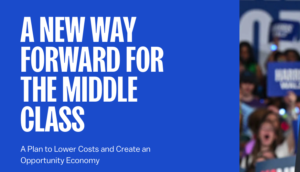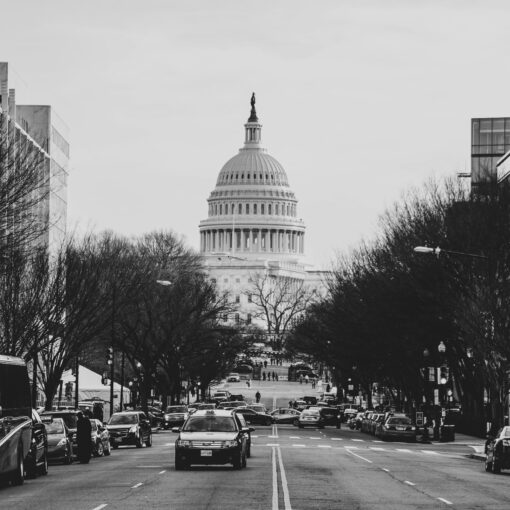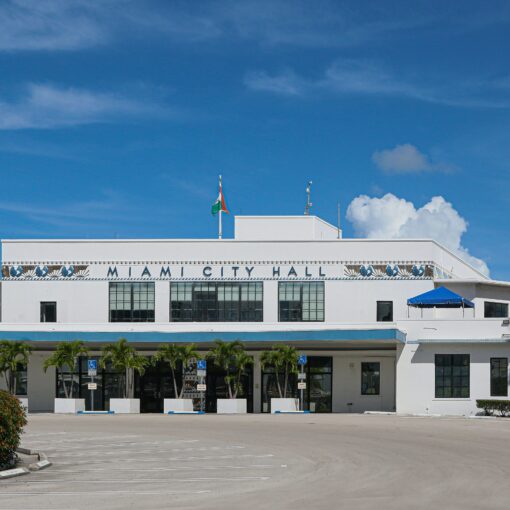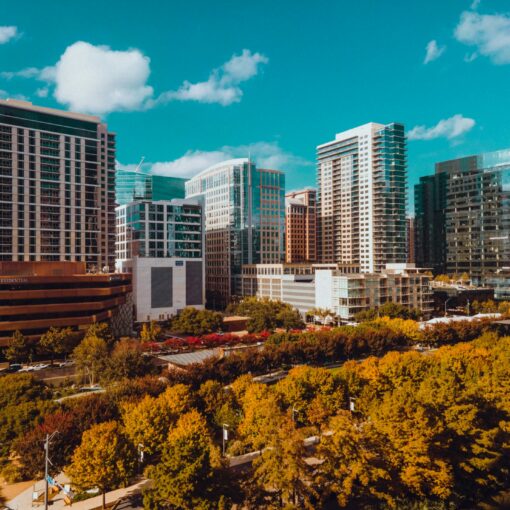 A New Way Forward for the Middle Class: A Plan to Lower Costs and Create an Opportunity Economy (the “Opportunity Economy” plan) yields just ten hits on the word “climate,” eight of which are in citations to other sources. Still, the Harris-Walz vision for an “Opportunity Economy” maps neatly onto many of the objectives, strategies and policies local governments hold with respect to combating climate change and redressing gaps in racial equity. This post explores the intersections between the Harris-Walz proposals – particularly for housing – and many cities’ climate and equity goals, highlighting existing federal policies that cities can lean into and new enabling policies local governments could consider to make the most of the Opportunity Economy. While I write this post in the context of the Harris-Walz proposals, many of the same actions and enabling policies can better position cities to facilitate climate just housing, jobs and local business regardless of who next sits in the White House.
A New Way Forward for the Middle Class: A Plan to Lower Costs and Create an Opportunity Economy (the “Opportunity Economy” plan) yields just ten hits on the word “climate,” eight of which are in citations to other sources. Still, the Harris-Walz vision for an “Opportunity Economy” maps neatly onto many of the objectives, strategies and policies local governments hold with respect to combating climate change and redressing gaps in racial equity. This post explores the intersections between the Harris-Walz proposals – particularly for housing – and many cities’ climate and equity goals, highlighting existing federal policies that cities can lean into and new enabling policies local governments could consider to make the most of the Opportunity Economy. While I write this post in the context of the Harris-Walz proposals, many of the same actions and enabling policies can better position cities to facilitate climate just housing, jobs and local business regardless of who next sits in the White House.
A Plan to Build 3 Million Homes
Housing has been a core animating tenet of the Harris-Walz campaign, especially the topline proposal to build three million new housing units over four years. The Opportunity Economy plan proposes an expansion of the Low-Income Housing Tax Credit (LIHTC) to “significantly expand affordable rental supply by more than 1.2 million new affordable homes,” as well as a new Neighborhood Homes Tax Credit to build or rehabilitate owner-occupied homes. Both of those credits would be allocated to states to further apportion to projects (the tax credits themselves are taken by the taxpayer – a developer or homeowner), so local governments will need to work with their states to obtain credits for new housing developments. As with any new or expanded tax credit, Congressional action would be required. The Opportunity Economy plan also proposes a $40 billion fund that would “provide state and local governments, and private developers and homebuilders, funds to invest in innovative strategies to expand the housing supply,” including reductions in regulatory burden, innovative construction techniques, and “self-sustaining financing mechanisms to scale new housing construction.” If this fund is enabled by Congress, local governments could have significant flexibility to facilitate housing construction, as the plan states: “This will be a result-driven innovation fund with one core requirement: state and local governments must show that they will deliver results in building rental properties and that homes are affordable.” These supply-side interventions are proposed alongside up to $25,000 in down payment assistance for first-time homebuyers, likely through tax credits.
The proposals regarding environmentally-friendly construction are less specific, but the Opportunity Economy plan states that “Harris will continue working to facilitate mass transit-oriented development and energy efficient homes to lower costs.” Since cities play a critical role in facilitating the construction of new homes, they may have latitude to define what this looks like, either at the local level or through federal advocacy. Certain strategies adopted at the local level can help ensure that new homes are built to maximize energy efficiency, electrification, and renewable energy; are resilient to the impacts of extreme weather; and offer residents easy access to non-vehicular modes of travel. Moreover, cities can often play a key role in improving housing affordability in both newly-built and existing units.
Local Enabling Policies for New, Affordable, Green Housing
A mix of local, state and federal policy tools will shape how new housing units are built, and cities should take stock now to ensure that proper enabling policies are in place to accommodate new housing and facilitate the greenest and healthiest construction possible. Zoning codes and other land use requirements and plans are good places to start; cities can rezone or remove barriers from existing zoning codes to allow for more housing density, more affordable units, proximity to public and active transportation modes, and ample green space to enhance quality of life and climate resilience. Simple tweaks to zoning rules include the removal of minimum parking requirements (to save developers from spending on parking that the market doesn’t demand and to reduce impermeable pavements that exacerbate stormwater issues); allowing for accessory dwelling units or otherwise upzoning single family areas to two- or three-family zones; and modifying property line setback requirements that inhibit the installation of exterior insulation, heat pumps, or EV chargers. Other approaches can involve transit-oriented development, a named priority in the Opportunity Economy plan; height or density bonuses in exchange for green design and/or housing affordability; or thorough overhauls of a zoning code or land use master plan to prioritize green and affordable housing development. For projects that go through land use review (i.e., that are not as of right), a city might negotiate green construction, stormwater management, green space set-asides, and affordable units into special permits. The goal is to attract housing development in the community through appropriate enabling zoning reforms while ensuring new homes are affordable, resilient to the impacts of climate change, and near to transit, green space, and other amenities.
For local governments with authority, upgrades to local building codes can also help enable the construction of green new residential buildings. Strong building codes are critical to ensuring new homes, which are intended to last for decades, are built to the latest energy standards. In addition to enhanced energy performance requirements, changes to local building codes might include electric-, solar- or EV-readiness; all-electric incentives; and structural requirements to make buildings more resilient to climate impacts. Of course, many local governments lack meaningful local building code authority and would need to work with their states, if the state similarly prioritizes green home construction.
Building performance standards and other requirements for existing buildings can help ensure that homes are operated efficiently and with low greenhouse gas emissions once they are constructed. While these measures are largely intended to change enabling conditions at the local level, it is possible that they’ll also tie neatly into federal programs meant to spur new housing. In other words, grants, tax credits, and other federal incentives could incentivize or be conditioned on construction to a zero-energy or other advanced code standard.
Finally, cities may wish to undertake efforts to counteract unintended consequences like increases in rent and home prices that push out longtime residents in a process of “green” gentrification. While the hope is that enough homes are built to counteract the scarcity that can lead to displacement, cost increases can strain budgets in low-income households and force some residents to move out altogether. The proposed Neighborhood Homes Tax Credit is meant to address this concern in part by funding improvements to owner-occupied homes, allowing those owners to build equity and stay in their neighborhoods. For rental homes, local governments will need to work within their state-delegated authority to protect against evictions. Cities could also consider rent stabilization, just cause eviction laws, financial assistance to renters, and programs to preserve existing affordable housing, depending on their state law authority. Some local governments have little authority to enact renter protections, but they may have more latitude to develop zoning or other reforms that prioritize affordability. Combatting rent increases and resident displacement will be a highly place-specific endeavor, but should be considered alongside broad housing reforms from the federal government.
Overlay with Existing Federal Programs
Regardless of which elements of the Harris-Walz Opportunity Economy make it through Congress or are implementable by executive order, they will complement an existing ecosystem of federal programs seeded by the Inflation Reduction Act (IRA) and other recent federal laws. In other words, even if new initiatives do not themselves prioritize energy efficiency, electrification, or renewable energy, they will almost certainly be stackable with grants, rebates, tax credits and lending products that do. By helping stakeholders navigate both landscapes – housing and IRA – cities can promote construction for new housing that is affordable, electric, and energy efficient and retrofits for existing homes to lessen climate impacts, indoor air pollution, and energy bills.
Some local governments have received grants from federal agencies for advanced building codes and other building decarbonization projects, as have some community-based organizations. Many cities are also still drawing funds from the Energy Efficiency and Conservation Block Grant (EECBG) program, monies that can bolster efforts to attract new and renovated green housing within a community – to tighten residential construction codes and building performance standards, perform residential building energy audits, and develop energy efficiency programs. Cities may wish to assess how efforts funded by federal grants can help position them well for new or upgraded housing. For example, a federal grant might help update energy or emissions performance standards for multifamily properties, develop a market for building retrofit and maintenance workers through upgrades to municipal buildings, or offer funding for direct improvements to residential properties.
The IRA also established two rebate programs available to households for investments in energy efficiency and the purchase of electric appliances. The efficiency rebates offer up to $8,000 per household or housing unit for projects modeled to achieve 15 percent or greater energy savings, with the highest rebate amount reserved for improvements to low-income housing (whether by a homeowner or a residential building owner). The electrification rebates offer low and moderate income households up to $14,000 for the installation of heat pumps, induction stoves, and other electric appliances, as well as for electric panel and wiring upgrades and for weatherization. Each of these rebate programs are or will be run through the states, and only a handful are currently up and running. Rebate programs will continue to come online, and they will be critical to greening many cities’ existing housing stock. Local governments will not directly draw on these rebates, but their residents and residential landlords can use them to improve housing quality, indoor air quality, and energy performance within a city.
Certain tax incentives are also available for the construction or renovation of housing that meets energy performance or green building metrics. The Section 45L tax credit offers housing developers up to $2,500 for new and substantially renovated homes achieving Energy Star certification and up to $5,000 for those that meet the Department of Energy’s Zero Energy Ready Home standard . The 45L credit is available for manufactured, single-family, and multi-family homes. A tax deduction under Section 179D of the tax code is also available for whole-building energy efficiency retrofits at multi-family residential buildings of four or more stories. The deduction can cover qualifying appliances and improvements installed as part of a 25 to 50 percent reduction in annual building energy costs as compared to the ASHRAE Reference Standard 90.1 or in energy use intensity as compared to the building’s baseline, up to $5.00 per square foot. These tax incentives can overlay not only any newly applicable tax credits and other programs adopted under the Opportunity Economy plan, but also existing housing tax credits like the Low-Income Housing Tax Credit. Other existing tax credits include one for individual households to defray costs for energy efficiency improvements, heat pumps, and heat pump water heaters and the business and residential investment tax credits for rooftop solar and storage. While local governments will not generally not use any of these incentives directly, they can be directed to developers and residents to support green home construction and retrofits.
In addition to rebates and tax incentives, the IRA’s Greenhouse Gas Reduction Fund (GGRF) provided $20 billion in capitalization and start-up assistance for a national network of green finance institutions. The eight direct grantees under the GGRF program are still developing their programs and loan product offerings, but there are some early hints as to how they can support new and retrofitted green homes. One grantee, Power Forward Communities, will offer “online tools, consumer education, and a network for contractors to streamline household decarbonization, weatherization, and other remediation efforts… [along] with new low-interest financing products and community grants” (exact offerings will vary by geography). Under another GGRF program, the Clean Communities Investment Accelerator, the EPA chose five awardees that will use their grants to capitalize the balance sheets of Community Development Financial Institutions (CDFIs), credit unions, and other community lenders in cities across the country. Details remain sparse at this time, but community lenders can use that capital to offer loan products and services that advance housing decarbonization such as green mortgages, retrofit loans with payback terms that mirror energy savings over time, and property assessed clean energy (PACE) financing. Unless they own or are developing housing, cities may not use these particular offerings themselves, but an understanding of the landscape can help steer the capital needed to build and retrofit clean, healthy housing in the community.
Complementary Elements of the Opportunity Economy: Small Businesses and Jobs
This post focuses on the Harris-Walz plans for housing, but the Opportunity Economy also outlines significant policy proposals meant to spur job creation and entrepreneurship. Each of these can help enhance local capacity to build, retrofit, and maintain homes that are efficient, electric, renewable-powered and resilient to climate impacts.
The entrepreneurship proposals in particular could help build out a green homes workforce, with many service providers run locally by residents who might otherwise be shut out of business ownership. One strategy would allow new businesses to deduct $50,000 in start-up business expenses (up from the current $5,000 tax deduction), and to delay taking that deduction until a future tax year when they might have a profit. The Opportunity Economy plan also proposes allocating one-third of federal contracting dollars to small businesses, with a particular focus on “rural and other underserved small businesses,” allowing entrepreneurs to grow their businesses. It also suggests a “small business expansion fund” that would work with CDFIs to offer low-cost loans to growing small businesses, as well as the expansion of the State Small Business Credit Initiative, which helps spur financing and venture capital investments.
Cities might consider how to offer complementary supports to new businesses that can build green homes, perform energy and electrification retrofits, install and services electric appliances, solar panels, and energy storage, and more. If the Opportunity Economy plan is implemented as written, it will likely incentivize movement in this direction, as it promises to “leverag[e] federal funding” to “encourage states and local governments to reduce burdensome regulations for small businesses, [including] expedited review of building, public way, and health permit applications.” The Opportunity Economy plan also proposes funding “a network of new and existing federal, state, local, and private business incubators, and small business innovation hubs” providing technical assistance; connections to capital, customers, and contracts; and funding. It’s possible that cities could themselves establish and run one of these incubators or hubs, or that they could create the conditions for another entity to do so within the community. Where appropriate, local governments can work to get new businesses enrolled in minority and women owned-business enterprise programs to better position them for local, state, and federal contracts. The Opportunity Economy plan also looks to create new jobs through a new “America Forward” tax credit. Details on this credit are presently sparse, but the proposal includes a focus on jobs in “clean energy manufacturing and innovation,” and for investments in energy communities, a term defined under the IRA as areas in which unemployment is higher than average or in which coal mines or coal-fired power plants have closed in recent decades. While many details remain to be ironed out, cities will create the enabling conditions to attract new manufacturing facilities, office campuses, and other job centers.
Federal Advocacy
In a scenario where Congress is able to enact reconciliation or appropriations legislation that advances the Opportunity Economy plan, local governments motivated to advocate on climate should, with their various associations, consider how to connect climate efforts to the Harris-Walz housing proposals. Tax incentives are a common reconciliation tool (they comprise the largest forecasted spend in the IRA), and, as discussed above, the Harris-Walz plan outlines several of them. Cities might advocate for these new housing tax incentives to be conditioned on the claimant weatherizing the home, completing an energy audit, or meeting some more advanced environmental standard. Beyond this, cities might also advocate for expansion of existing tax programs. For example, the 45L tax credit could be expanded to offer more money for Energy Star and DOE Zero Energy Ready Homes, and some groups have started advocating for an energy efficiency investment tax credit that would provide an effective rebate for residential building improvements. All new and expanded tax credits would ideally be made eligible for elective pay so that nonprofit (and if applicable public) landlords and housing developers could benefit. Outside of tax credits, local governments can advocate for extended or expanded grant programs, particularly EECBG, which has been re-upped several times in the past and which is available for a range of uses.
Moving Forward
It’s likely that we won’t know the results of the presidential election until late next week or beyond. If the Harris-Walz ticket is successful, the transition team’s efforts to equip the incoming administration and advance the Opportunity Economy plan will accelerate sharply. There are many ways cities can align their efforts, including assessing whether their policies enable an influx of new, green housing and how new businesses and jobs might take root within the community; continuing to implement existing federal policy; and preparing to advocate for local climate priorities in federal housing legislation. This work will be worthwhile regardless of electoral outcomes – while a Trump administration will have different priorities than a Harris administration, a local government’s work to establish the right enabling conditions to attract new, affordable, green housing can have that effect (albeit a lesser one) even without federal support. Cities stand to move their priorities forward by laying the groundwork for an increase in climate-friendly and affordable housing, whether or not their work is reinforced by a strong federal partner in the coming presidential administration.
Amy Turner is the Director of the Cities Climate Law Initiative at the Sabin Center for Climate Change Law at Columbia Law School.





